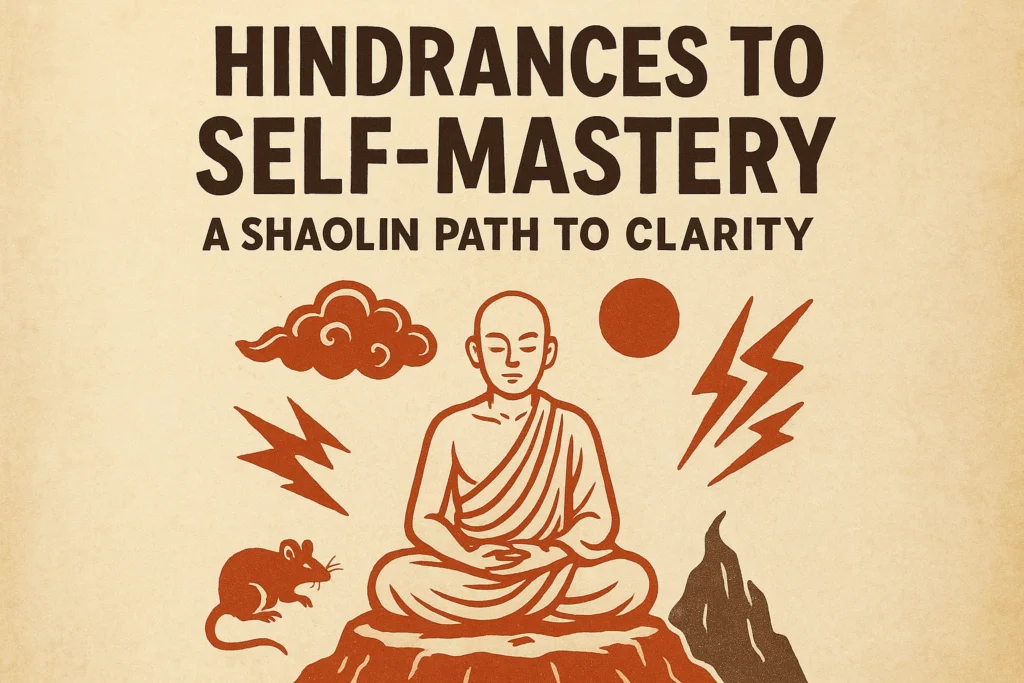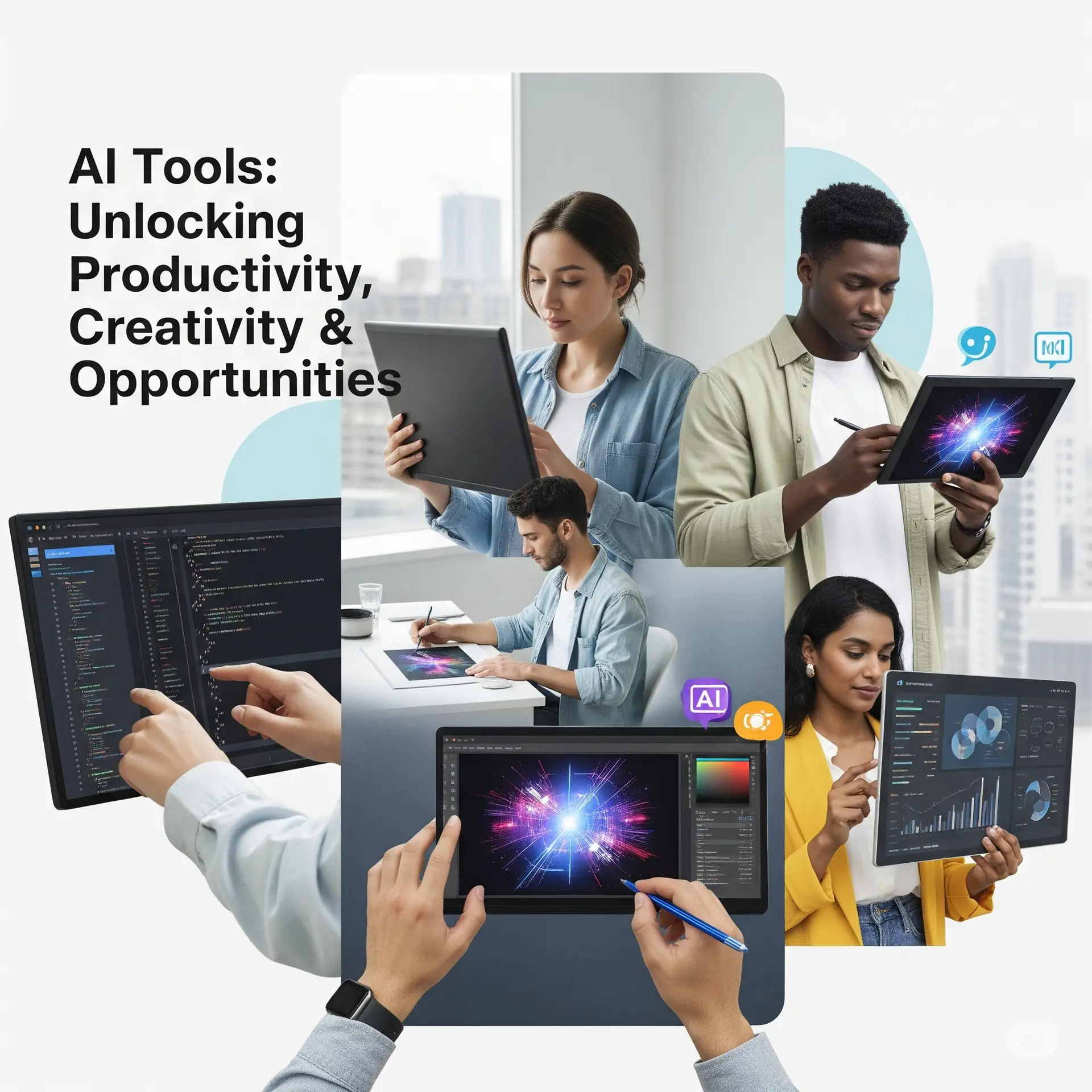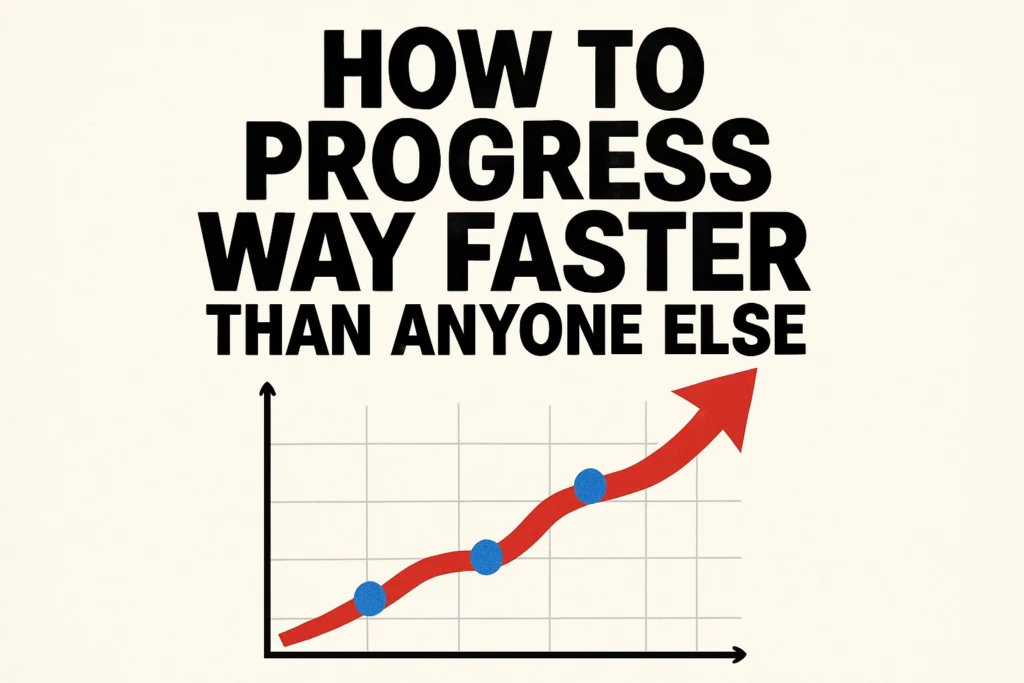Table of Contents
ToggleHindrances to Self-Mastery: A Shaolin Path to Clarity

Overcoming Hindrances to Self-Mastery
The key themes and practical insights from Master Shi Heng Yi's, "5 hindrances to self-mastery." The talk emphasizes the importance of self-exploration and provides a framework for identifying and overcoming mental obstacles to achieving clarity and personal fulfillment.
---Core Message: The Journey of Self-Mastery
Master Shi Heng Yi, who bridges German upbringing with ancient Shaolin practices, highlights a fundamental missing element in conventional education: learning about oneself. His personal journey, which diverged from parental expectations of a traditional career path, led him to monastic life and the "exploration and discovery of yourself." He asserts that true value in life lies in "sharing with others," "connection," "training and development of yourself," "enjoying your time, even doing nothing," and critically, to "find a way and do the things you like to do."
The Mountain Analogy: The Uniqueness of Individual Paths
A central analogy used is the story of a man who consults numerous travelers about climbing a mountain but never undertakes the journey himself. This illustrates two crucial points:
"Each individual needs to find the most suitable way to climb that mountain."
There is no single, universally applicable path to self-mastery or clarity."There is information possible to be shared with words, but it is impossible to share the experience of clarity when you are standing on that peak by yourself."
True understanding and insight come from personal experience, not merely from receiving information.
Clarity, as defined by Shi Heng Yi, means
"you see more clear."
This leads to interrelations becoming"more apparent"
and eliminates the need to"believe anyone or believe anything."
Ultimately,"seeing clear means you can distinguish for yourself which is the proper direction to take and which decisions do I have to make in order to make my goals or aspirations start to shape?"
---The Five Hindrances: Obstacles to Clarity
The core of the talk identifies five mental states, referred to in the Shaolin Temple as "the five hindrances," that prevent individuals from "moving on and climbing that mountain" (achieving clarity and self-mastery). These states make it
"very hard to see clearly and therefore engage in the right decisions."
Sensual Desire:
- Definition: Arises from paying attention to something that gives positive emotion (from sight, sound, smell, taste, or feeling).
- Impact: Leads one astray (
"lost your track"
) and can escalate to obsession, preventing clarity. - Analogy: Discovering a delightful restaurant on the path up the mountain and being unable to leave.
Ill-Will:
- Definition: A state of mind arising from negative emotions – aversion, rejection, or dislike towards an object, situation, or person.
- Impact: Makes the journey unpleasant and often leads to stopping progress.
- Analogy: Disliking rain, bumpy roads, or swimming when these are necessary parts of the mountain journey.
Sloth and Torpor:
- Definition: "Sloth" is
"heaviness of the body,"
and "Torpor" is"dullness of the mind."
Characterized by sleepiness, lack of motivation, low energy, and often manifests as depression. - Impact: Creates an
"imprisonment"
where it's"very hard to make any type of mental or physical effort,"
preventing continuation of the path. - Analogy: Being locked in a cell, unable to move forward.
Restlessness:
- Definition:
"The state of an unsettled mind."
The mind cannot"settle in the present moment,"
constantly"worrying about the future or traveling into the past and rejecting, judging about an event that happened into your past."
- Impact: Prevents clarity because
"there is no time to see clearly anymore."
- Analogy: The
"monkey mind,"
jumping"from one branch to another, unable to stay for too long time at the present moment."
Skeptical Doubt:
- Definition: A state of mind based on indecisiveness, leading to getting
"lost in thoughts"
with questions like"Can I do this? Is this the right path? What will the others say? What if this? What if that?"
- Impact: Disconnects one from
"the goals and aspirations that once you have set to yourself,"
leading to stopping rather than moving on.
Overcoming the Hindrances: The Four-Step Method
Master Shi Heng Yi offers a practical, four-step method to address and remove these hindrances, which he likens to
"dark cloud[s] on your mind"
:- Recognize:
"Recognize in what state of the mind you are finding yourself in."
(Self-awareness) - Accept:
"Learn to accept, acknowledge, and allow the situation or a person to be the way how it is, to be the way how they are."
(Non-resistance) - Investigate:
"Investigate your emotional and mental state, and ask questions: Why did it come up? What is going to be the consequence if I remain in that state?"
(Inquiry and understanding) - Non-Identification: The ultimate practice:
"I am not the body. I am not the mind. I am not my emotion. It's just that I can see all these three aspects about me."
(Detachment from transient states)
Conclusion: The Call to Self-Mastery
The overarching message is a call to personal responsibility for one's life journey.
"All of our lifetimes, all of our lives are too unique to copy the path from someone else."
To find"meaning"
and"value,"
one must"learn and master yourself, and don't let the hindrances stop you."
The speaker concludes with an invitation to those who choose"to climb that path to clarity,"
expressing happiness to"meet you at the peak."
Self-Mastery Hindrances: FAQ
1. What is the core philosophy behind the Shaolin training and Buddhist practices described?
The core philosophy revolves around self-exploration, self-discovery, and self-mastery. Shi Heng Yi emphasizes that while academic education teaches about the external world, it often neglects the internal understanding of oneself. The Shaolin practices, including mental and physical training, are designed to help individuals develop clarity, enabling them to see interrelations more clearly, distinguish the proper direction for themselves, and make appropriate decisions to achieve their goals. The ultimate aim is to find one's most suitable path to "climb the mountain" of life and achieve a state of inner clarity and understanding.
2. Why does Shi Heng Yi emphasize personal experience over simply gathering information from others?
Shi Heng Yi uses the analogy of climbing a mountain to illustrate this point. He describes a man who, after asking 30 travelers about their paths and what they saw from the peak, decided he didn't need to climb the mountain himself. This highlights the crucial difference between information and experience. While words can share information, they cannot convey the unique, personal experience of clarity gained from reaching the peak oneself. Each individual must find their own way and put in the effort to truly understand and achieve their aspirations, rather than relying solely on the accounts of others.
3. What are the "five hindrances" and how do they impact an individual's journey towards self-mastery?
The "five hindrances" are different states of mind that prevent individuals from seeing clearly and making sound decisions, thus hindering their progress on their personal journey. They are:
- Sensual Desire: Arises from positive emotions stemming from the five senses (seeing, hearing, smelling, tasting, feeling). When indulged, it can lead to obsession and cause one to lose track of their path.
- Ill-Will: Stems from negative emotions like aversion, rejection, or dislike towards objects, situations, or people. Holding onto ill-will makes the journey unpleasant and can prevent further progress.
- Sloth and Torpor: Characterized by heaviness of the body (sloth) and dullness of the mind (torpor), manifesting as sleepiness, lack of motivation, and depression. It's like being imprisoned, making any mental or physical effort difficult.
- Restlessness: An unsettled mind that constantly worries about the future or dwells on the past, preventing one from being present. This "monkey mind" jumps from thought to thought, leaving no time for clarity.
- Skeptical Doubt: A state of indecisiveness where the mind gets lost in questions and uncertainties ("Can I do this? Is this the right path? What will the others say? What if this? What if that?"). This disconnects individuals from their goals and often leads to stopping rather than moving on.
4. How do these hindrances prevent clarity, and why is clarity important?
The hindrances place a "dark cloud" on the mind, making it difficult to perceive situations accurately. When the mind is clouded by sensual desire, ill-will, sloth, restlessness, or doubt, it cannot "see clearly." Clarity, on the other hand, means perceiving interrelations more apparently, allowing individuals to distinguish the proper direction to take and make effective decisions to shape their goals and aspirations. Without clarity, one is prone to misdirection, stagnation, and disconnection from their true path.
5. What are the recommended steps to deal with these hindrances when they arise?
Shi Heng Yi proposes a four-step method to remove hindrances:
- Recognize: Identify the specific state of mind you are experiencing (which hindrance is present).
- Accept: Acknowledge and allow the situation or person to be as it is, without resistance.
- Investigate: Explore your emotional and mental state by asking questions such as "Why did it come up?" and "What will be the consequence if I remain in that state?"
- Non-Identification: Practice separating yourself from these mental states, understanding "I am not the body. I am not the mind. I am not my emotion. It's just that I can see all these three aspects about me." This detachment helps to prevent being consumed by the hindrance.
6. What is the significance of the "rain" analogy when dealing with hindrances?
The analogy "Just let it rain" suggests a natural, non-resistant approach to the presence of hindrances. Instead of fighting or struggling against the "dark clouds" (hindrances) that appear, one should allow them to be there, much like allowing rain to fall. This aligns with the "Accept" step of the four-step method, emphasizing acknowledgment and acceptance of the situation without letting it consume or deter you from your path.
7. How does Shi Heng Yi's personal journey inform his perspective on self-mastery?
Shi Heng Yi's personal journey highlights the contrast between conventional societal expectations (academic degrees, career success) and the pursuit of internal understanding. Despite achieving academic success in Germany, he felt something was missing because his education didn't teach him about himself. His introduction to monastic practices at age four and subsequent dedication to this path, despite his parents' wishes, underscores his belief that true value and meaning in life come from self-exploration and mastering oneself, rather than solely managing the external world or conforming to predefined success metrics.
8. What is the ultimate message or call to action Shi Heng Yi offers to his audience?
The ultimate message is an encouragement for each individual to embark on their unique journey of self-mastery. Shi Heng Yi states that he cannot tell anyone which way to go, as each life is too unique to copy another's path. Instead, he empowers individuals to learn and master themselves, to confront and overcome the five hindrances, and not let anything stop them from climbing their personal "path to clarity." The implied call to action is to take responsibility for one's own internal development and strive for a state of clear understanding and self-realization.
Posts Gallery

Agentic AI for Enterprise Automation
Discover how Agentic AI revolutionizes enterprise automation, boosting efficiency and strategic decision-making.
Read More →
How Agentic AI Works: Intent to Execution
Unpack the intricate process of Agentic AI, from understanding user intent to executing complex tasks autonomously.
Read More →
Purpose & Use Cases of Agentic AI
Explore the diverse applications and strategic importance of Agentic AI across various industries and daily operations.
Read More →
What is Agentic AI?
A foundational article explaining the core concepts of Agentic AI, defining its components and its role in modern automation.
Read More →
Why Agentic AI?
Understand the compelling reasons and significant benefits that make Agentic AI a transformative technology for efficiency and innovation.
Read More →
AI Tools Spotlight
A comprehensive overview of cutting-edge AI tools that are shaping the future of automation and intelligent systems.
Read More →

